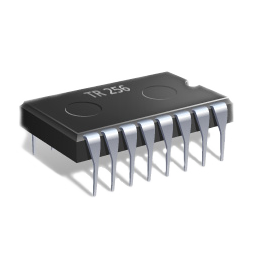VAR-SOM-OM37: Difference between revisions
From Variscite Wiki
(Created page with "{{Product|category1=VAR-SOM-OM37|category2=|image=VAR-SOM-OM37.png |cpu=Texas Instruments AM3703/DM3730 Processor. |mpu=1Ghz, ARM Cortex-A8 |gfx= |ram=64-512MB 333MHZ mDDR SDR...") |
No edit summary |
||
| (21 intermediate revisions by 4 users not shown) | |||
| Line 1: | Line 1: | ||
{{Product|category1=VAR-SOM-OM37|category2=|image=VAR-SOM- | {{Product|category1=VAR-SOM-OM37|category2=|image=VAR-SOM-OM37_wiki.png | ||
|cpu=Texas Instruments AM3703 | |cpu=Texas Instruments DM3730 / AM3703, Cortex™-A8, 1.0 GHz x1 | ||
| | |ram=64MB - 512MB LP-DDR | ||
|gfx= | |gfx=PowerVR SGX530 Accelerated 2D and 3D | ||
| | |display= RGB: 1400 x 1050 24-bit, Touch: 4-wire | ||
| | |storage=SD / MMC x2, Flash: 256 - 512MB SLC NAND | ||
|rtc=on-SoM | |||
|rtc= | |i2c=x2 | ||
|i2c= | |spi=x1 | ||
|spi= | |can= | ||
| | |net=WLan: 802.11 b/g/n, Bluetooth: 4.0,<br>Ethernet: 10/100/1000 Mbps | ||
| | |temp= -40 to 85°C | ||
|usb=USB 2.0 : 1x Host, 1x OTG | |||
|temp=- | |audio=Analog Microphone, Line In/Out | ||
|usb= | |uart=x3, up to 3.6 Mbps | ||
|dim=51 mm x 67.8 mm x 3.7 mm | |||
|audio= | |spec link=https://www.variscite.com/product/system-on-module-som/cortex-a8/var-som-om37-cpu-ti-am3703-dm3730/ | ||
| | |wire=1 Wire/HDQ | ||
| | |||
| | |||
| | |||
|description=The VAR-SOM-OM37 is a low-power, high performance System-on-module which serves as a building block and easily integrates into any embedded solution. It includes an extensive range of interfaces and communication protocols and is ready to run any embedded operating system such as Linux and Windows Embedded CE. | |description=The VAR-SOM-OM37 is a low-power, high performance System-on-module which serves as a building block and easily integrates into any embedded solution. It includes an extensive range of interfaces and communication protocols and is ready to run any embedded operating system such as Linux and Windows Embedded CE. | ||
|documentation= | |documentation= | ||
{{DocBox | {{DocBox|system=Linux | ||
|content= | |content= | ||
;Getting Started | |||
*[[VAR-SOM-OM37 Linux | *[[VAR-SOM-OM37 Linux Building Linux Images|Building Linux Images]] | ||
*[[VAR-SOM-OM35/7 Linux Nand Reflashing Scripts|Nand Reflashing scripts]] | |||
*[[VAR-SOM-OM37 Linux Uboot Environment Settings|Uboot Environment Settings]] | |||
*[[VAR-SOM-OM37/AM35 Linux Boot From SD-CARD|Boot From SD-CARD]] | |||
*[[VAR-SOM-OM35/7 Linux Splash Screen Support|Splash Screen Support]] | |||
;Kernel Configurations | |||
*[[VAR-SOM-OM35/7 Linux Display Driver |Display Driver]] | |||
*[[VAR-SOM-OM35/7 Linux Setting MPU Rate |Setting MPU Rate]] | |||
}}<!-- | |||
-->{{DocBox|system=Windows | |||
|content= | |||
;Getting Started | |||
|content= | |||
*[[VAR-SOM-OM37 Windows GS|Windows CE support]] | *[[VAR-SOM-OM37 Windows GS|Windows CE support]] | ||
*[[O.S. update service|O.S. update service]] | |||
*[[R3 Silverlight Support|R3 Silverlight Support]] | |||
*[[Suspend_Service_-_Graceful_shutdown|Suspend Service - Graceful Shutdown]] | |||
*[[VAR-SOM-OM35/7 Windows OpenGL | OpenGL]] | |||
*[[VAR-SOM-OM37 Windows EBOOT compilation|EBOOT compilation]] | |||
*[[Nand Flash Based File-systems Usage guidlines|Nand Flash Based File-systems- Usage Guidlines]] | |||
*[[VAR-SOM-OM35/7 Windows SDK |SDK setup and Application Development]] | |||
}}<!-- | |||
-->{{DocBox|system=Android | |||
|content= | |||
;Getting Started | |||
*[[VAR-SOM-OM37 Android GS|Android support]] | |||
|content= | }}<!-- | ||
*[[VAR-SOM-OM37 Android GS| | |||
-->{{DocBox|system=Hardware | |||
|content= | |||
;Getting Started | |||
*[[media:VAR-SOM-OM37_V1_0_5.pdf| Datasheet]] | |||
|content= | *[[media:OM37-14_26_08_2010_EMI.pdf| EMI test - FCC classB certified]] | ||
*[[media:VAR-3xCustomBoard_V2_1_DS.pdf | Custom Board - Single Board Computer / Evaluation kit]] | |||
*[[ | |||
*[[ | |||
}} | }} | ||
}} | }} | ||
{{NONUMBEREDHEADINGS}} | |||
Latest revision as of 18:56, 18 January 2023
VAR-SOM-OM37
The VAR-SOM-OM37 is a low-power, high performance System-on-module which serves as a building block and easily integrates into any embedded solution. It includes an extensive range of interfaces and communication protocols and is ready to run any embedded operating system such as Linux and Windows Embedded CE.
Linux
- Getting Started
- Building Linux Images
- Nand Reflashing scripts
- Uboot Environment Settings
- Boot From SD-CARD
- Splash Screen Support
- Kernel Configurations
Windows
Android
- Getting Started
Hardware
Specs summary
| CPU | Texas Instruments DM3730 / AM3703, Cortex™-A8, 1.0 GHz x1 |
| Memory | 64MB - 512MB LP-DDR |
| GPU | PowerVR SGX530 Accelerated 2D and 3D |
| Display | RGB: 1400 x 1050 24-bit, Touch: 4-wire |
| Storage | SD / MMC x2, Flash: 256 - 512MB SLC NAND |
| Network | WLan: 802.11 b/g/n, Bluetooth: 4.0, Ethernet: 10/100/1000 Mbps |
| RTC | on-SoM |
| I2C | x2 |
| One-Wire | 1 Wire/HDQ |
| SPI | x1 |
| UARTs | x3, up to 3.6 Mbps |
| USB | USB 2.0 : 1x Host, 1x OTG |
| Audio | Analog Microphone, Line In/Out |
| Temperature Range | -40 to 85°C |
| Dimensions | 51 mm x 67.8 mm x 3.7 mm |




